What is Manuka Honey?
Manuka honey is produced by nectar gathered from the Leptospermum family of plants. Manuka is the Maori name for Leptospermum scoparium. Leptospermum scoparium is found in both Australia and New Zealand. New Zealand was first to successfully market the benefits of Manuka honey.
Manuka honey is unique because it contains antibacterial and antimicrobial compounds. The most prevalent compound present in Manuka honey is Methylglyoxal (MGO). The antibacterial and antimicrobial strength of Manuka honey means it can be used for healthcare and wellbeing. Manuka honey can be used to naturally treat range of ailments including skin conditions and wounds, digestive conditions and for colds and flu.

What is the UMF rating
One compound found in Manuka honey is naturally occurring hydrogen peroxide. Hydrogen peroxide is found in most honeys and gives honey an antibacterial property. Once Manuka honey is used, on skin or orally, the hydrogen peroxide activity diminishes quickly. This property of honey to produce hydrogen peroxide was called Peroxide Activity (PA) by Professor Peter Molan.
However, in the 1980’s Professor Peter Molan from Waikato University, New Zealand discovered that Manuka honey continued to exhibit strong antibacterial activity after the hydrogen peroxide was neutralized. At this point he did not know what the active compound was, so he called it the Non-Peroxide Activity. Non-Peroxide Activity or NPA was the first measurement used to grade Manuka honey and was internationally recognised. Professor Peter Molan also termed this new discovery the Unique Manuka Factor.
Unique Manuka Factor or UMF rating was developed in New Zealand and measures the Non-Peroxide Activity (NPA). New Zealand registered the UMF rating system so that only New Zealand businesses could use the UMF rating. Australia also has a similar system called Unique Leptospermum Factor or ULF.
A short time later two scientists, one from Waikato University New Zealand and one from Dresden University, Germany collaborated to find the exact compound responsible for Manuka’s additional antibacterial, NPA Activity. Once these scientists discovered the active compound was Methylglyoxal, they gave it the tag MGO.
Now MGO is the global standard rating system that most people use and recognise.

What is the MGO rating
The MGO rating is the level of naturally occurring Methylglyoxal present in the honey. MGO is the chemical marker that laboratories use to determine the antibacterial strength of the honey. Most countries now agree that MGO is the best method to accurately describe Manuka honey potency.
The higher the concentration of MGO in the honey the higher the rating and the better antibacterial strength the honey has. For example, 550+ MGO is a stronger antibacterial honey than 100+ MGO honey. Keeping in mind that each antibacterial strength still has benefit and can be used for different treatments. More on this further down this post.

Differences between UMF and MGO
Having multiple rating systems NPA, UMF and ULF made navigating the Manuka honey industries difficult, especially for consumers. This is why the MGO rating has been adopted internationally. The difference between UMF and MGO can be confusing as both systems use a number followed by a + symbol.
The table below shows the differences in the NPA/UMF ratings verse the MGO rating. The MGO rating uses much higher numbers starting at 30+ and going up to 1500+ or higher, while the UMF starts at 2.8+ and goes up to 28+. Consumers need to be careful not to confuse the ratings and to mistakenly think that they are getting a stronger activity than they are actually getting.

What is the more accurate rating to use?
MGO is a more accurate rating system than older systems because it is measuring the level of Methylglyoxal and the antibacterial strength of the honey. Scientist use a technique called High Performance Liquid Chromatography (HPLC) to test and measure the MGO level in Manuka honey. The HPLC test is performed by a machine that separates different compounds through high pressure. The HPLC can accurately measure the level of MGO compound present in the honey. The MGO rating is then awarded the tested honey. This MGO rating is then translated into NPA, UMF and other ratings based on the table below.
To directly measure the NPA or UMF in the past scientist tested in petri dishes with samples of the honey. In this method there is more room for human error and variance in the results and is a less accurate method than measuring the MGO with a HPLC machine. MGO also uses a larger number scale and so it is a more accurate and specific rating system.
UMF & MGO Rating Calculator Table
The table below shows the comparable strengths of MGO verse UMF.

Try Australia’s Manuka Honey with us today
All our Manuka honeys are labelled with the globally recognised MGO rating system. We aim to make it simple and transparent for the consumer to purchase a good quality Manuka honey for their specific needs. We offer a full range of independently tested Manuka honey products, including some TGA approved Manuka honey products. When you buy from us, you a purchasing Manuka honey direct from the Beekeeper and fresh from the beehive to you.









This is an excellent post which fully describes the health benefits of Manuka Honey and it’s benefits for everyone including the novice. Thank you.